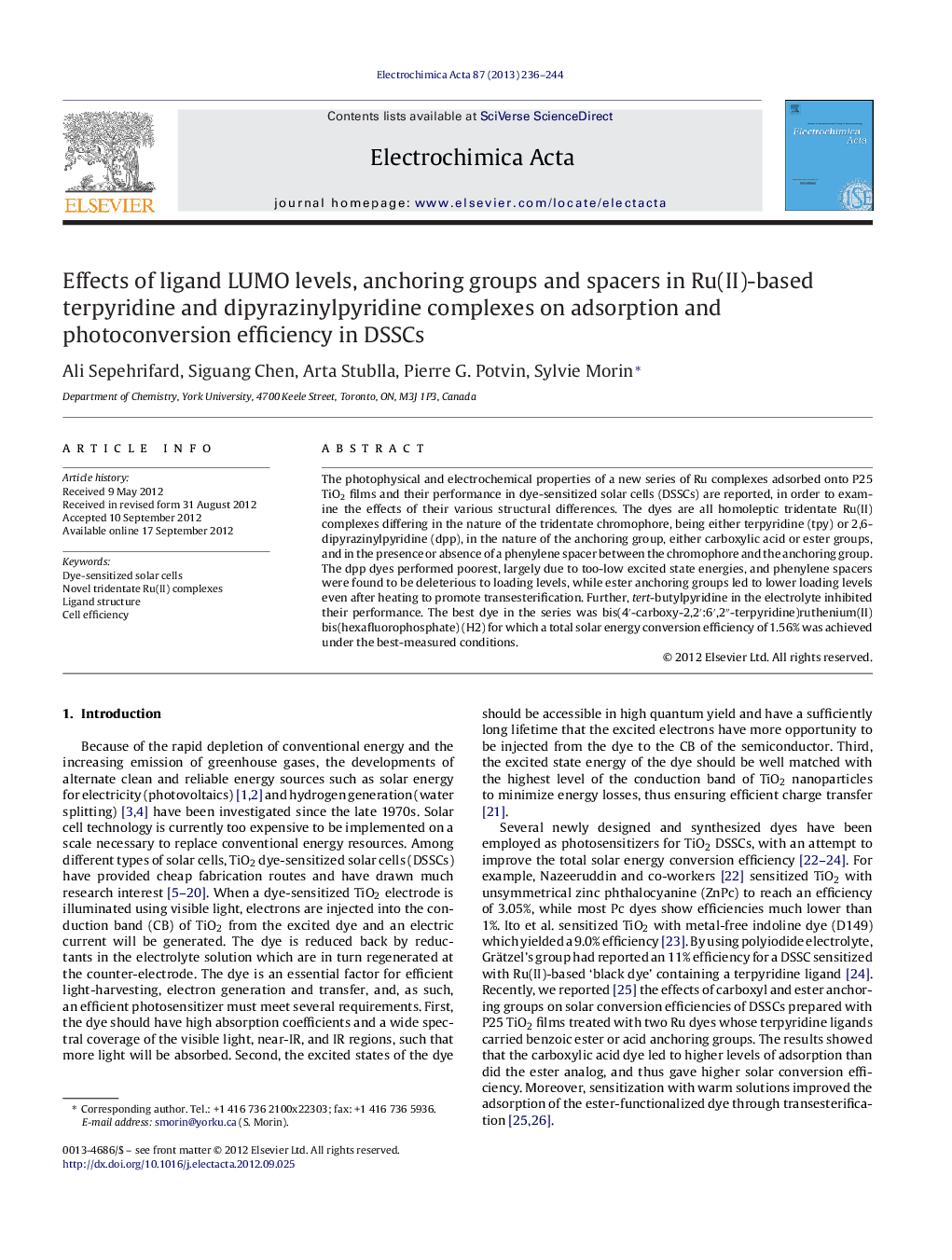| Article ID | Journal | Published Year | Pages | File Type |
|---|---|---|---|---|
| 187984 | Electrochimica Acta | 2013 | 9 Pages |
The photophysical and electrochemical properties of a new series of Ru complexes adsorbed onto P25 TiO2 films and their performance in dye-sensitized solar cells (DSSCs) are reported, in order to examine the effects of their various structural differences. The dyes are all homoleptic tridentate Ru(II) complexes differing in the nature of the tridentate chromophore, being either terpyridine (tpy) or 2,6-dipyrazinylpyridine (dpp), in the nature of the anchoring group, either carboxylic acid or ester groups, and in the presence or absence of a phenylene spacer between the chromophore and the anchoring group. The dpp dyes performed poorest, largely due to too-low excited state energies, and phenylene spacers were found to be deleterious to loading levels, while ester anchoring groups led to lower loading levels even after heating to promote transesterification. Further, tert-butylpyridine in the electrolyte inhibited their performance. The best dye in the series was bis(4′-carboxy-2,2′:6′,2″-terpyridine)ruthenium(II) bis(hexafluorophosphate) (H2) for which a total solar energy conversion efficiency of 1.56% was achieved under the best-measured conditions.
Graphical abstractFigure optionsDownload full-size imageDownload as PowerPoint slide
